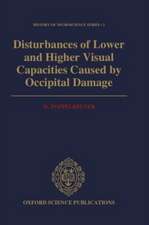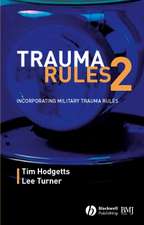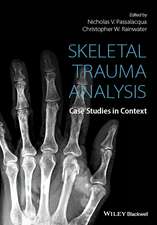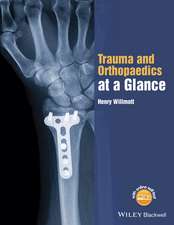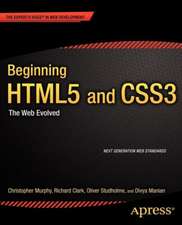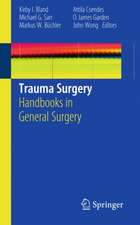The Molecular and Cellular Biology of Wound Repair
Editat de R.A.F. Clarken Limba Engleză Hardback – 30 mar 1996
| Toate formatele și edițiile | Preț | Express |
|---|---|---|
| Paperback (1) | 1826.69 lei 6-8 săpt. | |
| Springer Us – 28 iun 2013 | 1826.69 lei 6-8 săpt. | |
| Hardback (1) | 1838.20 lei 6-8 săpt. | |
| Springer Us – 30 mar 1996 | 1838.20 lei 6-8 săpt. |
Preț: 1838.20 lei
Preț vechi: 2241.71 lei
-18% Nou
Puncte Express: 2757
Preț estimativ în valută:
351.79€ • 363.41$ • 292.77£
351.79€ • 363.41$ • 292.77£
Carte tipărită la comandă
Livrare economică 26 martie-09 aprilie
Preluare comenzi: 021 569.72.76
Specificații
ISBN-13: 9780306451591
ISBN-10: 030645159X
Pagini: 611
Ilustrații: XXIV, 612 p.
Dimensiuni: 156 x 234 x 35 mm
Greutate: 1.06 kg
Ediția:1996
Editura: Springer Us
Colecția Springer
Locul publicării:New York, NY, United States
ISBN-10: 030645159X
Pagini: 611
Ilustrații: XXIV, 612 p.
Dimensiuni: 156 x 234 x 35 mm
Greutate: 1.06 kg
Ediția:1996
Editura: Springer Us
Colecția Springer
Locul publicării:New York, NY, United States
Public țintă
ResearchDescriere
'Provides comprehensive detail on the various aspects of particular molecules involved in the phases of injury and repair and the cellular movements and processes....This is an excellent reference book for libraries serving biology and health science clientele and for workers in this field of research.' -American Scientist, from a review of the First Edition All chapters of this second edition have been completely revised and expanded-especially the chapters on growth factors and extracellular matrix molecules. New chapters discuss provisional matrix proteins, extracellular matrix receptors, and scarring versus nonscarring wound healing.
Cuprins
Wound Repair: Overview and General Considerations (R.A.F. Clark). Provisional Matrix (K.M. Yamada, R.A.F. Clark). Macrophage Involvement in Wound Repair, Remodeling and Fibrosis (D.W.H. Riches). Resolution of Inflammation: Mechanisms and Potential Therapeutic Implications (C. Haslett, P. Henson). Epidermal Growth Factor and Transforming Growth Factor (L.B. Nanney, L.E. King, Jr.). Modulation of Wound Repair by Members of the Fibroblast Growth Factor Family (J.A. Abraham, M. Klagsbrun). Role of Plateletderived Growth Factor in vivo (C.H. Heldin, B. Westermark). Transforming Growth Factor£Ii£ (TGF£Ii£) (A.B. Roberts, M.B. Sporn). Integrins in Wound Repair (K.M. Yamada et al.). Reepithelialization (D.T. Woodley). Angiogenesis (J.A. Madri et al.). Mechanisms of Parenchymal Cell Migration into Wounds (J.B. McCarthy et al.). The Role of the Myofibroblast in Wound Healing and Fibrocontractive Diseases (A. Desmouliere, G. Gabbiani). Proteinases and Tissue Remodeling (P. Mignatti et al.). Proteoglycans and Their Role in Wound Repair (R.L. Gallo, M. Bernfield). Collagens and the Reestablishment of Dermal Integrity (B. Eckes et al.). The DermalEpidermal Basement Membrane Zone in Cutaneous Wound Healing (J. Uitto et al.). Fetal Wound Healing and the Development of Antiscarring Therapies for Adult Wound Healing (R.L. McCallion, M.W.J. Ferguson). Index.


